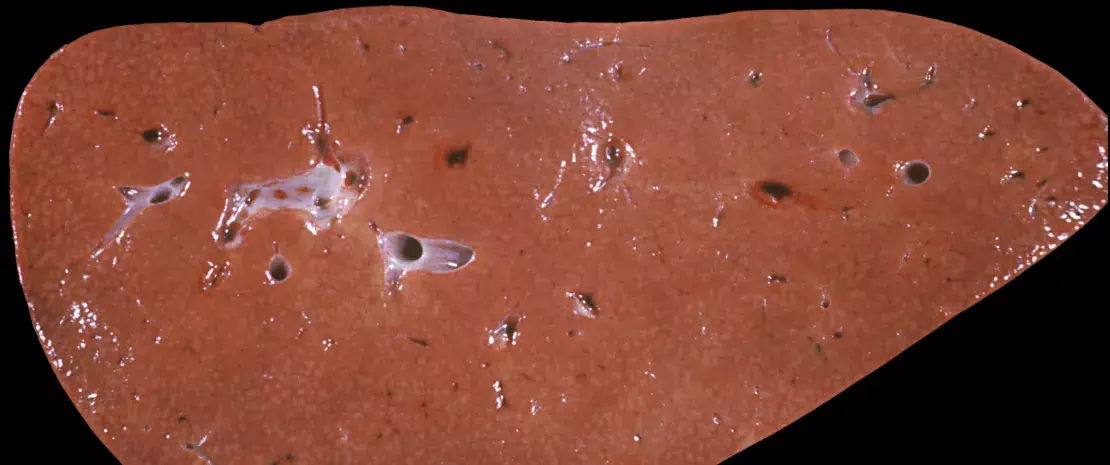Steatohepatitis: viral microbiota also involved
In addition to the bacterial changes previously identified in the gut microbiota of patients developing steatohepatitis, a study has also pointed to changes in the viral population. This may make it possible to identify and classify patients according to severity.
Sources
This article is based on scientific information

About this article
Changes to the intestinal microbiota have been linked to the severity of non-alcoholic steatohepatitis (NASH). However, the studies in question were limited to bacterial dysbioses, with patients’ viral microbiota having received little attention. Hence this prospective, cross-sectional and observational study on the links between the characteristics of the intestinal virome and the different histological stages of the disease. To this end, the researchers sequenced the metagenome of stool viruses in 73 NASH patients at various stages of the disease and of those in 22 control subjects. Patients with a high NAS score and advanced fibrosis are at increased risk of disease progression, carcinoma, and death.
Severity associated with viral diversity
Compared to the 29 NASH patients with a low histological score (NAS 0-4) or the control subjects, the 44 patients with a high NAS score (5-8) or cirrhosis showed:
- a significant loss of intestinal viral diversity
- a significant reduction in the proportion of (sidenote: Bacteriophage Virus that specifically targets and infects bacteria Scitable by Nature education_2014. Bacteriophage definition ) compared to other types of intestinal viruses, which was even more pronounced in patients using PPIs (proton-pump inhibitors).
In addition, the severity of fibrosis increased with viral dysbiosis.
Cause or consequence?
Therefore, two NASH severity markers (NAS score and fibrosis) were associated with significant decreases in viral diversity and bacteriophage abundance. However, these links were merely correlative, with further studies required to determine whether viral dysbiosis is a cause or consequence of NASH and to understand the mechanisms involved. The virome may directly affect the host by triggering an immune response and/or influence the bacterial microbiota, with an increase in certain Lactococcal phages (common in the most severe cases) and Bacteroides spp. associated with a decrease in these bacteria.
A predictive model?
The second step consisted of building a model that included a viral diversity index and simple clinical variables (age, platelet level, etc.), which was able to identify:
- patients with severe forms, with a reliability of 0.95
- F2-F4 stage fibroses, with a reliability of 0.88
The addition of viral diversity data significantly improved the models, compared to those based solely on clinical parameters or bacterial diversity–two criteria on which another team recently based their diagnosis of liver cirrhosis and distinguished it from fibrosis. Therefore, instead of carrying out highly invasive biopsies, it may be possible to identify patients at risk of NASH (as well as therapeutic targets) by analyzing fecal viromes.










